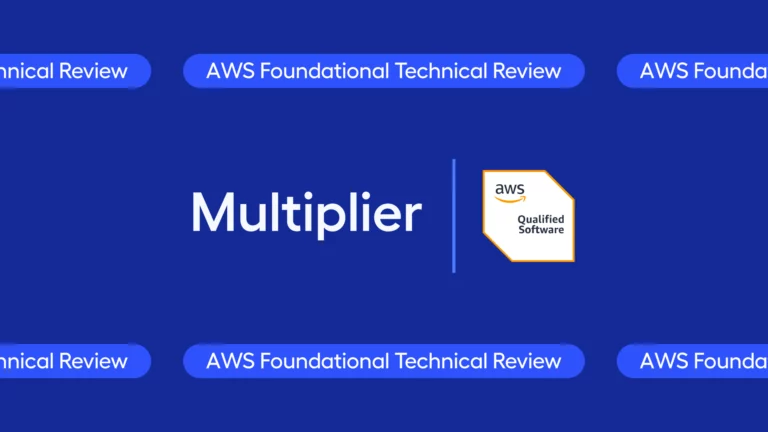Modern business is a fast-paced, ever-evolving world where organizations must be diligent and innovative to succeed. Every industry is more competitive than ever, with businesses constantly striving to improve daily operations, increase productivity, and reduce costs. From this, enterprise workforce management is garnering a lot of attention and intrigue.
Enterprise workforce planning and management is a holistic and comprehensive approach to overseeing and innovating your workforce. This encompasses many developmental processes across all departments, establishing a hive mind capable of improving and growing the business.
A study of business leaders by the IBM Institute for Business Value revealed that 60% of respondents feel enterprise workforce management has evolved from a helpful tool to “mission critical.” Enterprise workforces must embody cohesion and collaboration to succeed and grow in today’s competitive industries — meaning the definition of workforce management as we know it must evolve.
Why is enterprise workforce planning important?
The bigger they are, the harder they are to organize. Businesses use a vast array of resources, tools, and technologies. It’s a lot to keep track of if you want to use data and gain fresh insights. We live in a data-driven world where entire industries evolve overnight, so it pays to have a clear and precise business overview to identify current needs and future priorities.
Employees also need time, tools, training, support, and evaluation to evolve and grow. This is where enterprise workforce management proves helpful, nay a necessity! But to recognize the value, you must acknowledge the dangers of poor enterprise workforce planning and management. Such as:
Less time spent on individual tasks: Poor workforce management creates chaotic environments where less time is available, often too little time to do things right. This leads to less quality, more errors, lower morale, and increased stress.
- Implementation of tools: Tools are critical for success in a technological world. No tools means slow workflows with sluggish processes destined to bottleneck, often leading to delays and compromises over quality.
- Lack of training: Amidst an enormous talent crunch, poor or no training simply won’t cut it. Training is vital for employee output, effort, understanding, passion, and retention. Without it, businesses are stuck in the mud with no blueprint to evolve.
- Support from management: A distinct lack of support and leadership creates an uninspired, frustrated enterprise workforce. Automation creates more time and opportunity for mentorship, creating future leaders through support and passing on hard skills.
- Evaluation: Enterprise workforce management offers powerful tools to gather and harness data. Poor workforce management encourages low standards for evaluation, leading to more mistakes and minimal improvement — you need to understand your workforce’s flaws and when to intervene.
Fortunately, business leaders recognize the urgency to revolutionize enterprise workforce management, which is reflected in current and forecasted investments. The IBM study mentioned above also showed that those new to workforce management expect to spend 33% more than in 2021. Current users will spend 24% more, and those who’ve invested in workforce management for a long time expect to spend around 29% more — so it shows those who adopted enterprise workforce management long ago still consider it to be a top priority.
Optimal Enterprise Workforce Size
Workforce management tools provide an in-depth overview of your business and a range of actionable data to utilize. Optimizing your enterprise workforce size is one of the most underrated benefits of workforce management, helping you understand your requirements better while avoiding over and understaffing.
Gathering a wealth of information is vital for evolving your workforce and organization. And thanks to AI and automation, this process is much quicker and more effective. With a clearer understanding of workflows and what is required to achieve your goals, from conception to execution of projects. With this knowledge, you can forecast future plans, cut costs with staff reductions, or recruit new talent to accommodate growth.
You want the “Goldilocks” workforce, not too much or too little. It’s got to be just right. The consequences of understaffing and overstaffing can be abundant and impactful. However, the benefits of optimizing enterprise workforce sizes can be incredible, such as:
Increased productivity and efficiency
Overstaffing presents risks like employee disengagement due to a lack of tasks available. Whereas understaffing creates frantic, stressful environments with overworked employees who struggle to meet customer demands. Effective enterprise workforce management gives you a clear picture of your requirements and whether you have too much/little staff to achieve them.
If you get it right, customers are satisfied and your workforce is enhanced. When you know how many employees it takes to maximize productivity and efficiency, you establish a baseline for optimal performance. From here, you can implement new technologies and temporary contractors to deal with busy periods and upskill and reskill employees to encourage business growth.
Reduce costs
Reducing costs is a benefit that’s always worth striving for, especially if the changes have positive effects on other areas of the business. Enterprise workforce management offers clear insight into requirements regarding workforce size and skills. This is essential for reducing costs and avoiding over-expenditure due to overstaffing and understaffing while also optimizing the workforce to produce better results.
Overstaffing is a huge problem, as there’s simply not enough work to keep all of your employees busy, and your monthly payroll will outweigh employee output. Understaffing can be equally problematic. With fewer skilled professionals completing tasks and covering all bases, productivity, performance, and profits will be low while stress is at an all-time high.
Improved service and reputation
A workforce is a direct reflection of the organization it represents, so it pays to optimize your team(s) to maximize productivity and establish balance. Optimizing your workforce ensures you have enough resources and the right people to provide an optimal service. Anything less risks negative effects on both the quality and quantity of services available.
The use of tools, automation, and data-led forecasting offers unimaginable insight. Understanding the best approach to achieve your goals and a clear understanding of the volume of skilled workers you need is a recipe for success.
Additionally, enterprise workforce planning is vital for company culture, with the use of automation proving invaluable for freeing up employee workflows and encouraging innovation. McKinsey’s Organizational Health Index states that stakeholders of companies with a strong culture achieve as much as three times more in financial returns.
Strategies for Enterprise Workforce Management
Workforce management consists of many strategies and techniques relating to efficient recruitment, onboarding, and retention. Some focus on the employee side of things, whereas others use data and forecasting to establish how the business will evolve and what’s required to adapt.
Budgeting and forecasting
Forecasting helps you predict how many employees and resources you’ll need over a certain period, ensuring your workforce is reliable and productive. It also allows you to identify workforce trends so if demand increases for a particular skill set, you can quickly and easily adjust.
Budgeting allows you to track labor costs against your budget and identify any current or potential discrepancies. This can help you understand where your money is going and what return on investment (ROI) you can expect. Additionally, you’ll be aware of any additional budget available for recruitment or new technologies.
Evaluating employee performance
Employee performance management ensures employee style and delivery of their tasks benefit the organization. Performance analysis is a key aspect of enterprise workforce management because it helps organizations recognize areas needing improvement and identify where they’re succeeding. A Gallup study shows that only 20% of employees feel that their employer’s performance analysis process actually motivates them.
Performance management is critical for employee development as it creates a system of accountability and reflection. Where employees can be accurately evaluated, and employers can see who’s underperforming. Workforce management tools demonstrate their value in this regard as the sheer volume of up-to-date information offers everything needed to make important decisions and find weak spots.
Identifying skill gaps and recruitment needs
The modern business world suffers from a distinct lack of talent, and businesses desperately cry out for specialized skill sets. Workforce management tools help you learn as much as possible about your business and its workers. If you can forecast future needs based on trends and data, enterprise workforce planning can be one of the most valuable recruitment tools available.
With a detailed breakdown of the skills you possess, those you’re lacking, and the abilities your business needs for evolution — you remove the guesswork from recruitment and begin to find the right hire, not the most convenient. Better hires stick with you for longer and have a much bigger impact on performance; lesser highers can affect retention and require additional training.
Multiplier’s workforce management platform offers incredible data analysis and creates a transparent system that can be accessed and utilized at all times. No manual data gathering or processes. The system works behind the scenes and provides vital data as and when required.
Quick and seamless onboarding
If you want new hires to make a big impact right away, onboarding processes need to be efficient and rapid. Unfortunately, manual processes and outdated technology only slow things down and create unnecessary complications. Enterprise workforce management tools implement automated processes, saving time, money, and resources.
New talent is essential for business growth and development, so you need them on the frontline as soon as possible. Multiplier allows for quick and seamless hiring and onboarding, with fully compliant employment contacts, appropriate salaries, and zero payroll errors. So, with all the tedious tasks taken care of, your full attention is on improving your business by implementing new and innovative employees.
Compliance
The importance of compliance in business cannot be overstated, and there are several legal and financial risks if you fail to comply with rules and regulations. Regardless of whether you’re a domestic or global employer, legal compliance can be a headache if you lack the tools to manage employee information correctly.
Whether it is insurance and benefits to salaries and taxes for new hires or veteran employees, compliance needs to be attained and reviewed regularly. A unified platform for all employee information and compliance details offers a simple yet effective way for HR to maintain order and avoid mistakes.
Introducing autonomy massively boosts productivity by streamlining workflows and increasing efficiency. Without the appropriate technology, compliance tasks consume more time and energy, which could be spent on projects and improving customer service. And if compliance blunders do occur, the stress and urgency harm employee and employer productivity.
Enterprise workforce management is the game-changer businesses need to reach new heights and commercial success. Do you want to improve your workforce’s productivity and efficiency? Multiplier’s workforce management tool enhances productivity, streamlines workflows, and ensures compliance. Book a demo to find out more!







